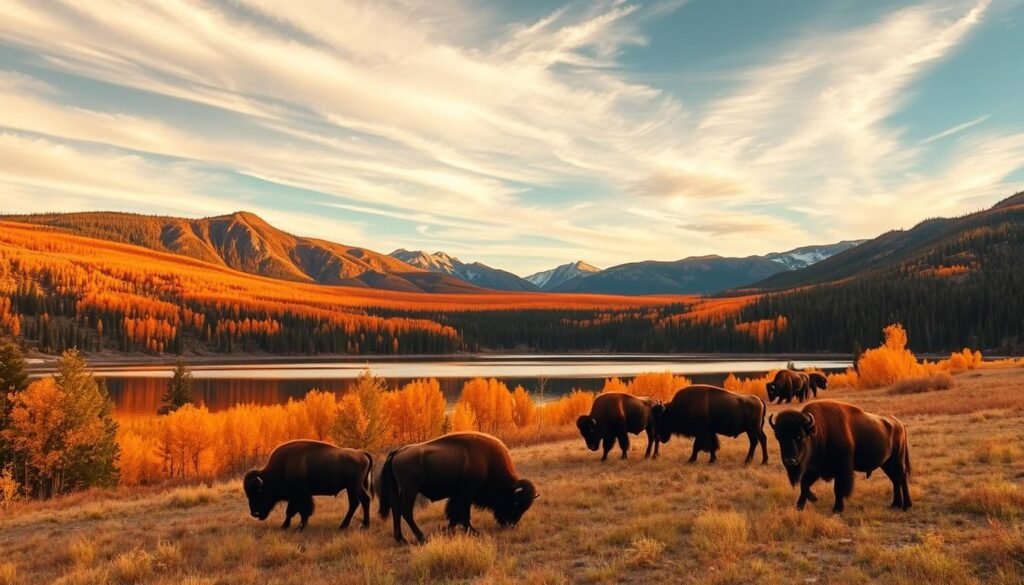Surprising fact: Yellowstone drew about 4.7 million visitors in 2024, yet much of the park stays quiet outside June through August.
I choose my travel window based on what I want: geysers, wildlife, or wide-open views without heavy crowds. Yellowstone is the first national park in the world, and that legacy pulls people from around the globe.
The park’s size and elevation shape everything. In summer most roads open and you can drive nearly the whole 251 miles, but sudden snow can still flip plans. In winter, I’m limited to the plowed Gardiner–Silver Gate corridor or over-snow tours that start in mid-December.
I balance temperatures, daylight, and animal behavior when I plan. Peak months bring long lines and full lots; shoulder months often offer calmer visits and more wildlife moments.
For a practical month-by-month view and tips on avoiding crowds, see my guide on recommended months and crowd strategies.
Key Takeaways
- I pick dates by priorities: geysers, wildlife, or fewer people.
- Summer opens most roads but brings heavy crowds and full parking.
- Shoulder months (Sept–Oct) often mean quieter trails and more animals.
- Winter limits vehicle access; over-snow trips begin mid-December.
- Weather flips quickly—build buffer days for closures or detours.
How I Decide the Best Time to Visit Yellowstone National Park
My planning always begins with one simple question: what do I want most from the park?
I pick dates by priority. If I want wildlife, I aim for dawn and dusk windows and spring when calves arrive. For geysers, I prefer warm, dry afternoons so steam doesn’t hide features. If long hikes are the goal, I wait until trails at higher elevations clear of snow.
Weather in this national park shifts fast. Sun can flip to sleet in minutes, so I always pack layers and a flexible schedule. July heat can reach 90°F in some valleys; January averages near 28°F.
I also use road-opening patterns as a backbone. If Dunraven Pass is still closed, I change routes and daily goals. Finally, I keep a backup plan—another basin, a scenic drive, or a museum—so a storm won’t waste a day.
| Priority | When I Go | Why |
|---|---|---|
| Wildlife | Spring & dawn/dusk | Young animals, active sightings |
| Geysers | Warmer, drier days | Clearer views, less steam |
| Hiking | Late spring–summer | Trails clear of snow |
| Quieter trip | April, Sept, Oct | Fewer crowds, calmer trails |
Peak, Shoulder, and Winter: What Each Yellowstone Season Feels Like
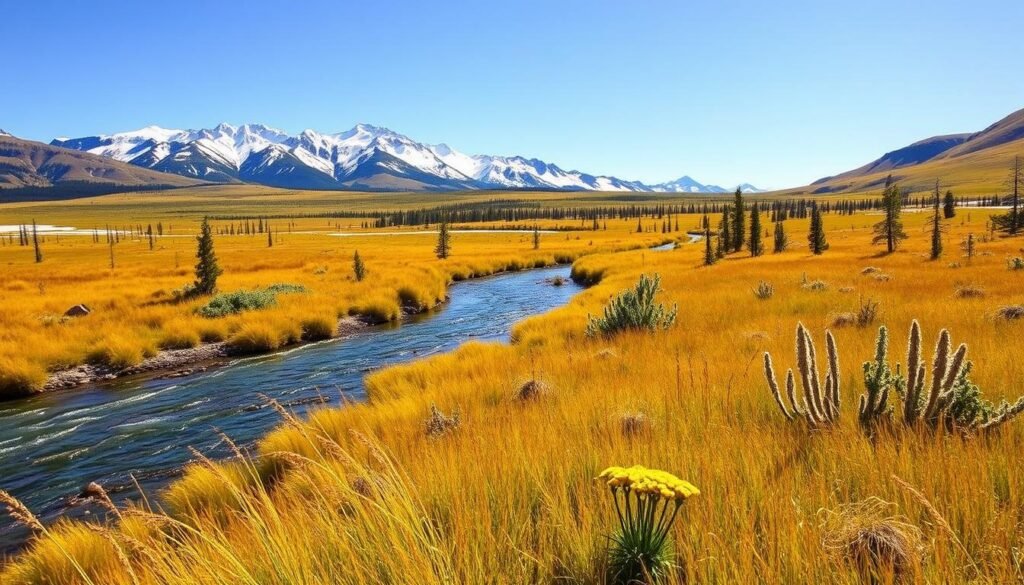
Each season in the park brings a very different pace and a unique set of trade-offs.
Peak season reality runs roughly June through August. I get full road access across most of the 251 miles and long daylight for big loops. But that comes with heavy crowds, packed parking, and waits at marquee spots like Old Faithful and Grand Prismatic.
Peak season reality check
On summer days I plan around congestion. I rise early for Lamar Valley and save mid-day for backroads or a long hike. Patience and a flexible route are essential.
Shoulder season perks
April, September, and October feel quieter. April often unlocks the West Entrance around April 15, and wildlife returns to lower valleys.
September and October add crisp air, fall color, and the elk rut. Services still run, but parking and trails are calmer.
Winter magic
From December through March, most roads close. Only Gardiner to Silver Gate stays plowed, and over-snow travel—snowcoaches and snowmobiles—dominates access.
I schedule wildlife viewing for cold mornings when steam and tracks stand out. Storms can delay plans, so I build slack into every winter itinerary.
- Access: peak = full roads; shoulder = partial openings; winter = over-snow.
- Pace: peak = busy; shoulder = relaxed; winter = quiet and intimate.
- Weather & temperatures: vary widely—pack layers and plan for rapid shifts.
| Season | Typical Access | What I Expect |
|---|---|---|
| Peak (Jun–Aug) | Nearly all roads open | Long days, heavy crowds, plan early/late |
| Shoulder (Apr, Sep–Oct) | Many routes open; some closures | Fewer visitors, wildlife activity, fall color |
| Winter (Dec–Mar) | Gardiner–Silver Gate plowed; over-snow elsewhere | Snow travel, dramatic steam, limited driving |
For a month-by-month breakdown and practical tips on picking the best months for your goals, see this best months guide.
The best time to visit yellowstone by what you want to see and do
What I want—geysers, animals, or empty trails—shapes when I arrive. I map each day to a goal so I get the most from the park without wasting daylight.
Geysers and hot springs most visible
For the clearest views of colorful pools and dramatic eruptions, I aim for warm, dry afternoons when steam lifts. That helps with Old Faithful and other geothermal features.
I often hike the Fairy Falls overlook for a sweeping view of Grand Prismatic Spring on calm days.
Wildlife opportunities: bears, wolves, elk, bison
I build dawn starts and head for Lamar Valley and Hayden Valley. Wolves show well against snow, while bears reemerge in March–April and bison calves appear in May.
Elk and moose peak in early fall, so I plan longer mornings and bring optics to watch ethically.
Fewer crowds and slower travel
When I want peace, I pick April, September, or October. I arrive early to snag parking at icons and spend mid-day on lesser-known trails.
Hiking conditions and trail access
Late spring through summer opens higher routes, though alpine paths can hold snow into June. I pack layers and keep alternative hikes ready.
| Goal | Ideal Window | Where I Go |
|---|---|---|
| Geothermal views | Warm, dry afternoons (summer) | Old Faithful, Grand Prismatic Spring, Upper Geyser Basin |
| Large mammals | Spring, May, early fall, winter dawns | Lamar Valley, Hayden Valley, meadows |
| Quieter visits | April, Sept–Oct | Backroads, less-known trails, early mornings |
Month-by-Month Highlights: What Each Time of Year Offers
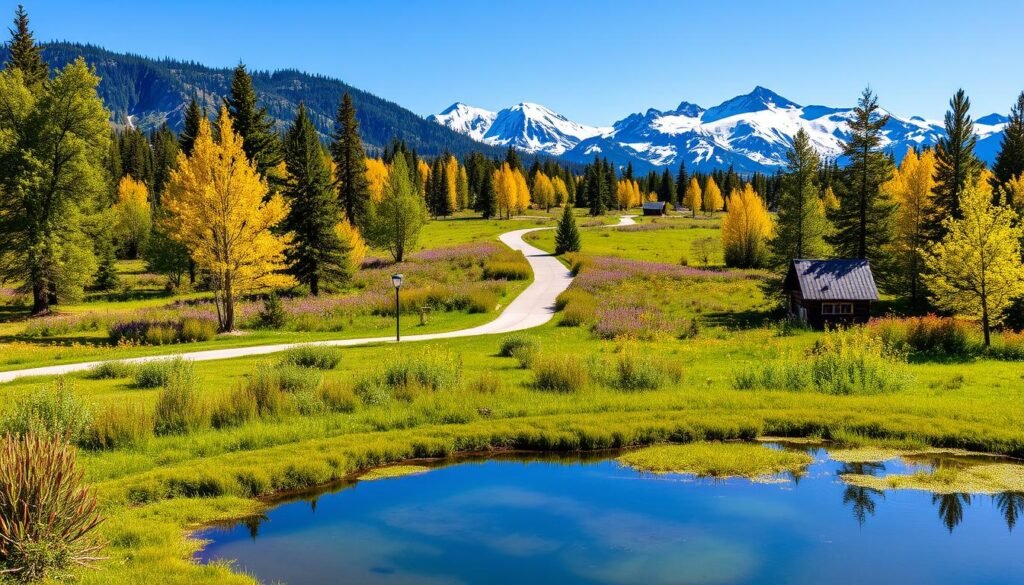
I run a quick month-by-month check before I lock dates so weather, road access, and wildlife align with my goals. This short guide helps me match days in the park to what I hope to see and do.
January–February
Snow brings quiet mornings and crisp light. Wolves and bison stand out against white basins, and average January temperatures sit near 28°F.
March–April
Thaw begins; trails get muddy and elk shed antlers. Bears reemerge and the West Entrance often opens around mid-April, so I make sure my route is flexible.
May–June
Roads open widely, wildflowers appear, and newborn animals are common. Early June can feel uncrowded as temperatures rise toward 63°F.
July–August
These months bring the warmest weather and the clearest geothermal views. I expect heavy visitors and plan sunrise starts for icons.
September–October
Cooler days, elk and moose rut, and fall color dominate. Weather can flip fast, so I pack layers and check forecasts before travel.
November–December
After November 7 most roads close; by mid-December I book over-snow tours from the North, West, or South entrances. I shift plans to winter-style itineraries.
- I match months visit to my priorities—photography, wildlife, or hiking.
- I check recent temperatures and road openings in the week before I go.
Wildlife Calendar: Prime Times for Iconic Animals
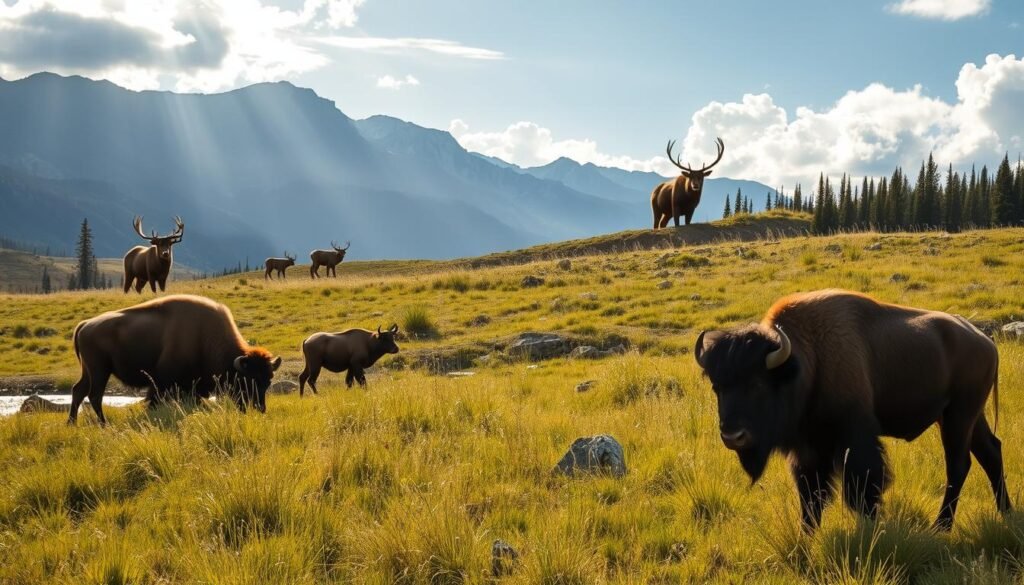
Spotting iconic species depends on aligning my hours with their habits. I map mornings and evenings first, then fill midday with geothermal basins or short hikes. That approach gives me the most reliable wildlife opportunities in the park.
Bears
I look for bears emerging in March–April, usually near valley edges at first light. I return in September when berry crops concentrate feeding and movement.
Wolves
Wolves show best on snow; winter dawns in Lamar Valley are prime. I stake out likely corridors at first and last light for the highest odds of a pack on the move.
Elk and moose
Late September brings rutting displays, bugling, and action in meadows and river bottoms. I scan edges from a respectful distance and listen for calls at dawn.
Bison
May brings red-dog calves in nursery groups. August delivers loud rut behavior—head clashes and dust-filled displays across broad valleys.
- I always use binoculars or a spotting scope and keep safe distances: 25 yards from large animals and 100 yards from bears and wolves.
- I favor Lamar and Hayden valleys as default corridors, and I stay patient—sitting in one spot often rewards more than chasing sightings.
Weather, Temperatures, and Road Access I Plan Around
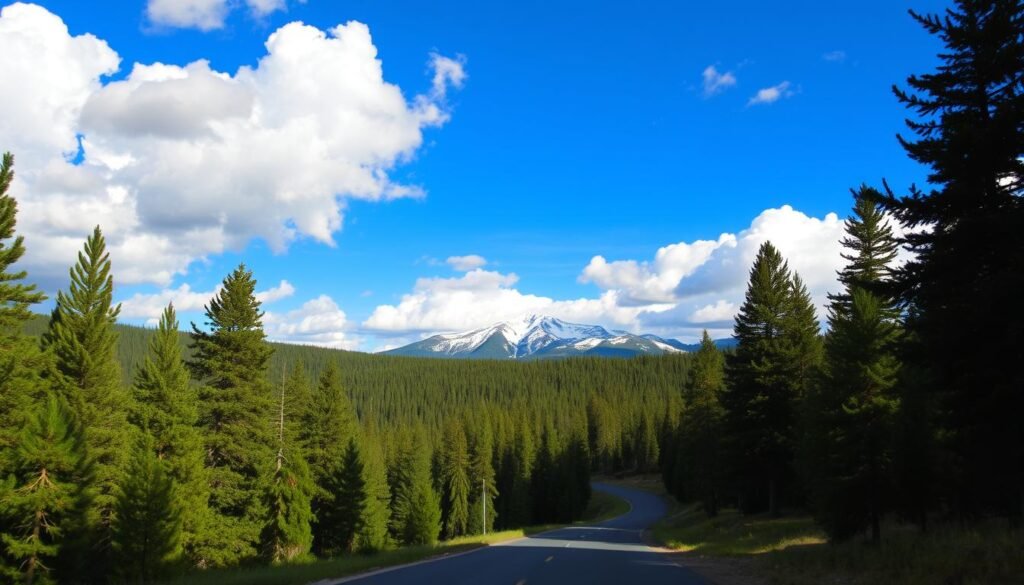
Weather patterns and road openings shape nearly every day I spend in the park. I use forecasts and the seasonal road calendar to set realistic routes and goals.
Typical temperatures and seasonal range
January averages near 28°F and can feel much colder at dawn. June sits around 63°F on average, while some valleys can climb toward 90°F in July.
Road openings I watch
I mark entrance dates on my calendar: West around April 15, East near May 6, South about May 13, and Dunraven often in late May—weather permitting. I make sure not to promise a full loop until I confirm openings the week before.
Winter access and higher routes
In winter only Gardiner–Silver Gate stays plowed; the park interior needs over-snow travel and tours that usually run from mid-December. Snow can linger on higher elevations into June, so I adjust hikes accordingly.
“Pack layers every day and build buffer time into drives—conditions change fast.”
- I carry a waterproof shell, insulating midlayer, hat, and gloves.
- I check roads and forecasts each morning before I head out.
- I keep fuel, water, and snacks topped off when sections are still reopening.
Timing Yellowstone’s Icons: Old Faithful, Grand Prismatic, Mammoth, and Lamar Valley
![]()
I time my days around the park’s busiest attractions so I can beat the worst crowds and still see the show.
Old Faithful and Upper Geyser Basin: crowd-savvy viewing windows
Old Faithful erupts roughly every 90 minutes, so I aim for the first eruptions after sunrise or a late-afternoon show. Parking is easier and boardwalks feel calmer between tour-bus waves.
I linger in the Upper Geyser Basin to catch Castle and Grand Geyser eruptions back-to-back. Patience pays: the network of boardwalks links a dozen standout geothermal features.
Grand Prismatic Spring: hike Fairy Falls overlook and aim for warmer days
I plan a warm, low-wind afternoon for grand prismatic spring photos. Then I hike the Fairy Falls overlook for the full color bands and clearer views when steam drops.
Mammoth Hot Springs and Lamar Valley: year-round geothermal and wildlife
Mammoth Hot Springs terraces are open year-round, so I often slot them on arrival or departure days via the north entrance. The springs shine in cold light.
I treat lamar valley as my dawn and dusk anchor for wildlife. Wolves, bison, and elk show best in those quiet hours.
- Plan around weather: warmth and low wind reduce steam and improve visibility.
- Park once and walk in Upper Geyser Basin to save time and avoid repeated lot hunting.
- Check eruption boards and set alarms so you’re in place a few minutes early.
Conclusion
I sum up each trip by aligning daily hours and the season with what I hope to see. For me, there is no single best time visit; I pick months visit based on wildlife, roads, or hiking access.
If I want fewer people, I aim for April, September, or October and plan dawn starts. For full loops and long hikes, summer gives broad access but more visitors.
I always pack layers, check road status and eruption forecasts, and center wildlife watching at dawn and dusk. Because Yellowstone is the first national park in the world, I build flexibility into my plans and let patience reveal the park’s best features.


